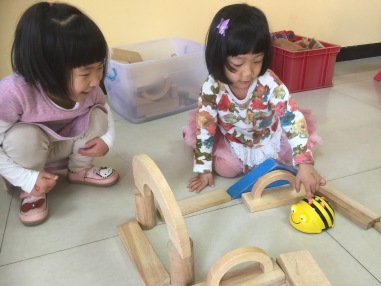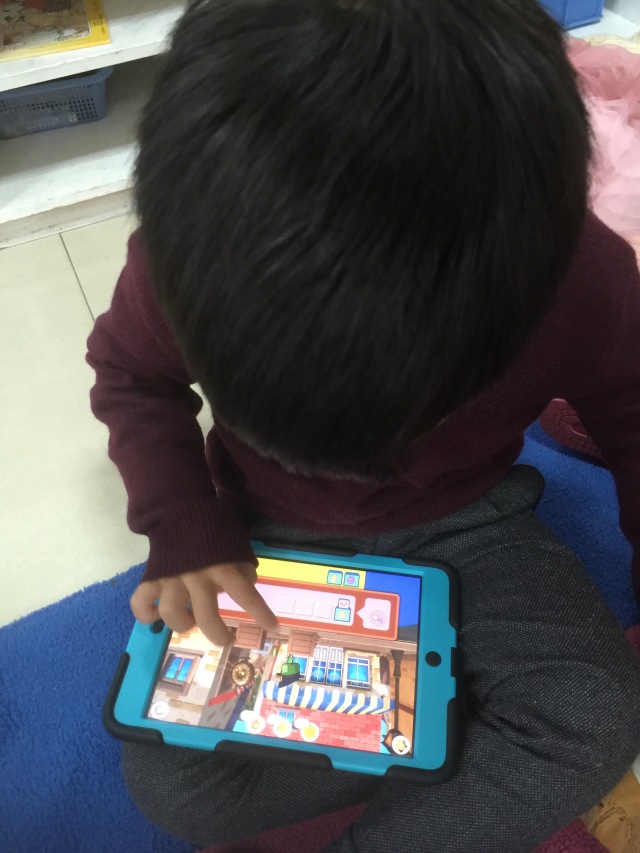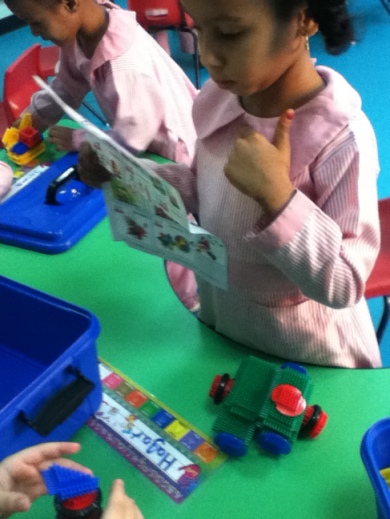“I Used to Think, But Now I Know” -8 Ideas about Translanguaging and Language Development
I’ve heard this word translanguaging tossed around a lot on Twitter and among educators, but, honestly, not only does its spelling baffle me but also what it looks like in education. Recently a colleague of mine presented a workshop on it which got me curious about what this elusive term could mean in classroom practice. So, I decided to include a book on it during My Summer Professional Reading for 2019 and by the time I was halfway through Translanguaging for Emergent Bilinguals: Inclusive Teaching in the Linguistically Diverse Classroom by Danling Fu and Xenia Hadjioannou, I knew I had to read more books on this topic.
Why? Because as I read the case studies, I realized that I knew so very little about the language development of bilingual and multilingual children. I also realized that I had a very limited perspective of their issues. You see, I, as a Caucasian American, grew up believing that English was a preferred language and was encultured to develop a bias of elitism which made any subsequent efforts to learn other languages half-hearted. This introspection was an illuminating and humbling experience, so I began picking up more books to fill in some gaps and help me understand what it means to truly be “culturally responsive“. There was one book, Teaching in 2 Languages: A Guide for K-12 Bilingual Educators, that contained a quote which really impacted my thinking around the connection between language and identity:

As a person who grew up in an all-English-speaking home, attending a monolingual American school, I’ve never had to grapple with how my home language and culture was viewed by others. But now I can easily see how other’s view of our language can impact our self-esteem. For example, I remember when English-Only became a legislative act in the state of Arizona (a state that borders Mexico). At the time, I hadn’t seen the harm in it, but now I know that banning the use of other languages in school was like rejecting the immigrants and multi-lingual persons which populated that state, who were mostly Mexican. As a teacher, it had huge consequences in our classrooms, and bilingualism became a dirty word.
Of course, the opposite of this is also true: if you really want to show me that you care, love my language. As an international educator, I have had a unique opportunity to live and learn a variety of languages and been exposed to a myriad of cultures. When I read the poet’s words above, it hit me deeply, remembering back to moments when a simple hello in a child’s home language made them light up with a smile of recognition. Now I know that smile said, “You see me. You love me.”, which was true, but I had undervalued this gesture, thinking that it was rather superficial. Now I know it communicated a message of acceptance and care.
 It makes sense that language is so deeply connected to self-worth because it not only reflects the values and perspectives shared with and among those language groups, but the self-expression of that child. Language communicates thinking through culture; and when we accept the use of a variety of languages being used in our classrooms, we accept that our students are woven together by a complex tapestry of experiences that can be expressed in a multitude of ways; denying them the use of their complete language repertoire is like rejecting their ideas and perspectives.
It makes sense that language is so deeply connected to self-worth because it not only reflects the values and perspectives shared with and among those language groups, but the self-expression of that child. Language communicates thinking through culture; and when we accept the use of a variety of languages being used in our classrooms, we accept that our students are woven together by a complex tapestry of experiences that can be expressed in a multitude of ways; denying them the use of their complete language repertoire is like rejecting their ideas and perspectives.
These books really stirred my heart and got me thinking about how important language is to our school’s culture and in the development of the self-esteem and personal identity of children. It’s not a small topic, but a big deal.
These are my 8 takeaways from my reading and the ideas that widened my understanding of translanguaging and the language development of children.
- Different languages are not contained in different parts of the brain. Multi-lingual children have access to all components of language facility during learning. So when we think of terms of “Spanglish” or “Chinglish”, we shouldn’t associate it with a lack of English competency, but instead demonstrating how holistic the nature of language is in our brain.
- Translanguaging is not the same as translation. Translanguaging is about empowering students to access language in order to grow their whole intellectual and social facilities and develop cognitively. Translation helps to serve this purpose but is not the end goal. We want students to integrate the understanding that exists in both languages, not preferring one language over the other.
- Language confusion is a misnomer. Multilingualism is an enhanced way of viewing and interacting with the world. What we think of as “language confusion” is actually us observing children in the process of integrating and experimenting with language; students are building bridges of networks in their brains, rather than tangling up their neurons. In fact, code-switching (the practice of moving back and forth between two languages) serves different purposes based upon the learner. So, code-switching is a deeply personal experience, and, as educators, we should consider what is being communicated vs. how it is being communicated in order to that we understand how best to support the learning needs of our students.
- Certain content areas require more skillful use of a child’s language repertoire and cultural background. I think most of us can appreciate that inquiry-based approaches utilize the scope of a child’s cognitive ability, particularly when language doesn’t create barriers during an active learning experience in which they are constructing conceptual understanding. However, social studies can be the most challenging of the content areas because it requires not only language skills to understand the abstract nature of vocabulary and concepts, but also highly influenced by the background knowledge and experience of the student. According to Sharon Adelman Reyes and Tatyana Kleyn, models such as Sheltered Immersion are more useful for students who have intermediate language capabilities; for emergent students, we need to provide learning resources in their home language in order to gain a full understanding and to bridge together their cultural dispositions with their prior knowledge and the learning within the classroom.
- Content objectives are not the same as language objectives. Although learning content may also call for learning the vocabulary associated with it, there is also an opportunity for a multi-lingual to use their language repertoire which included previous experience and terminology from their home language. For example, when learning content, students can use any of their languages to access information and gain a deeper understanding. So, if it makes sense to give them a book in Korean (or whatever is their mother tongue) about lifecycles because you want them to understand how living things change over time, that is perfectly fine to do so. Learning in their home language is adding not subtracting from their intellectual reservoir. However, if the lesson is specific to language, then outcomes need to be centered around the skills associated with developing fluency in it.
- Translanguaging involves the 5 Cs (communication, culture, connections with other disciplines, comparisons with students’ home language and culture, and the use of the foreign language in communities outside the classroom) for a holistic learning approach. Translanguaging encompasses more than just instructional practices, but also engaging the heart with the head of a child, in order to create an inclusive school culture and bridging the curriculum to the child’s experience.
- Graphic organizers aren’t the same as worksheets. Worksheets can often have a negative connotation. However, the purpose of graphic organizers isn’t to keep them busy but to help students clarify their thinking and can be necessary for multi-lingual students to access the full range of their language repertoire. We really need to integrate semantic maps (mind-mapping and conceptual maps) within lessons to combine visual and written information to accommodate the language needs of our students.
- There is a distinction between teaching a language and “special education”. Although language development could be dumped into the same category as “additional learning needs”, they are NOT the same. Moreover, an educator who is qualified in EAL (English as an Additional Language) or other second-language learning teachers, is not an expert with assessing and working with students with exceptionalities. Both are highly specialized fields and need to be treated as such.
These 8 ideas are really the beginning of getting a foothold into appreciating the complexity of language development. We need to stop this “English-only” approach in our schools because it does more harm than good when helping students to make academic progress and mature emotionally. Incorporating these ideas involves a comprehensive analysis of a school’s culture which can involve aspects such as language policies, parent education, teacher professional development and buying educational resources to create an optimal learning environment for our students. I know that I am just beginning to appreciate how connected culture and language is to our students’ identity, and plan to continue to study how it can be used at my school.
Perhaps you might consider areas in which your school can “grow the whole child” through languages other than English. Where would you start? Examining school and classroom libraries? Doing read-alouds in other languages? Auditing how and where multilingualism exists in your school? Encouraging more multilingualism, such as school and classroom displays that include other languages?
Once you start to brainstorm ideas, I’m sure you can find numerous ways in which you can employ language in the service of learning and building an inclusive culture within your school community. I hope this blog post whets your appetite and you dig deeper into the research and resources to create translanguaging in your school.
If you feel that I have forgotten some other essential aspects of translanguaging or have any resources that you wish to share, please post below. Thank you in advance for your thoughtful contribution.
Developing learners as leaders is my joy! I am committed and passionate International Baccaluearate (IB) educator who loves cracking jokes, jumping on trampolines and reading books. When I’m not playing Minecraft with my daughter, I work on empowering others in order to create a future that works for everyone.






















